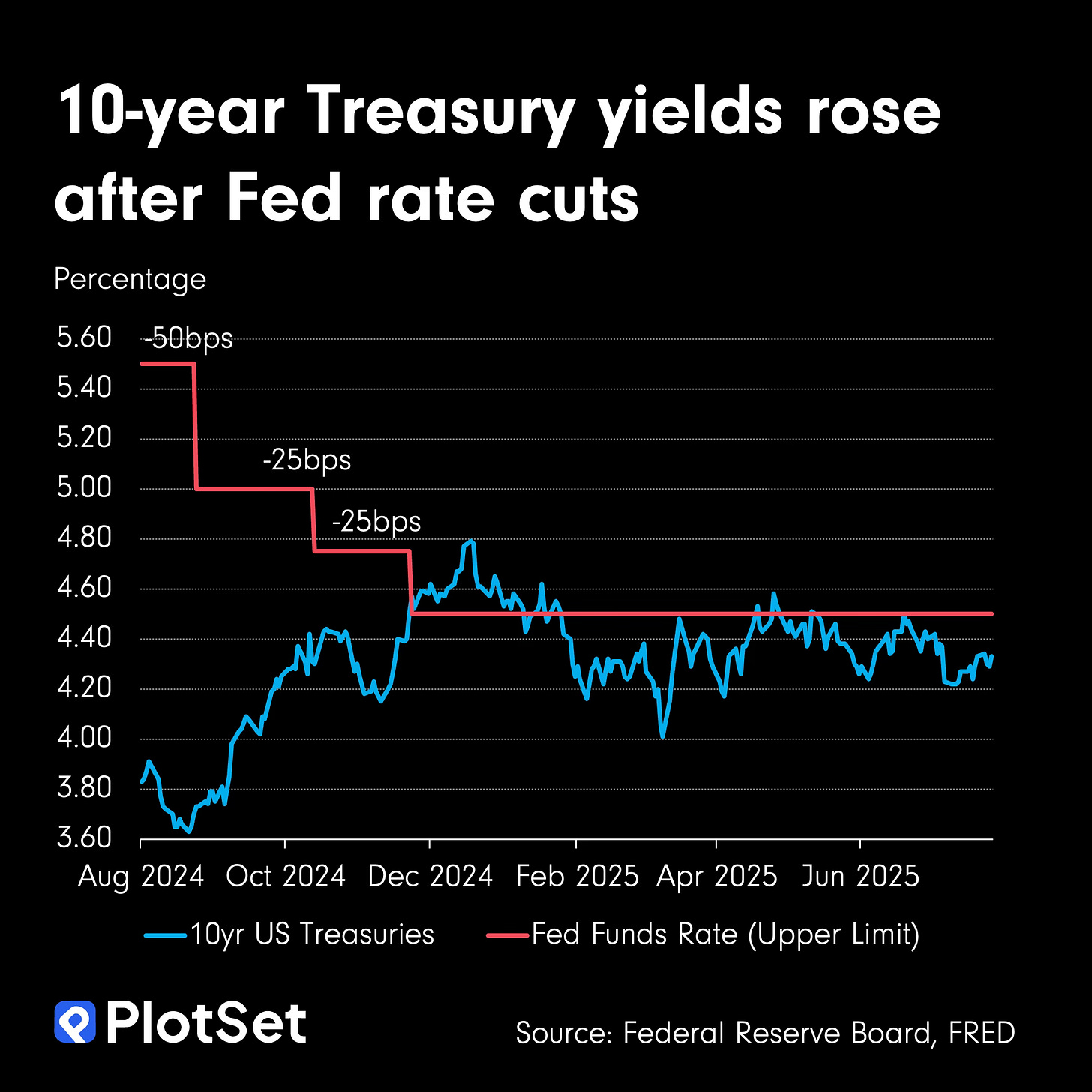Bond markets now listen less to the Fed
Five charts to start your day
Good morning – here are your five chart for the day.
I've been writing about this disconnect all week, and it still astounds me. The textbook relationship between Fed cuts and Treasury yields has completely broken down. In the previous seven cutting cycles by the Federal Reserve going back to the 1980s, the yield on the 10-year Treasury was lower 100% of the time 100 days after the first rate cut. This time? The exact opposite.
The mortgage market reveals the real-world impact of this breakdown. Thirty-year mortgage rates typically track the 10-year Treasury yield, so when Treasury yields refuse to fall despite Fed cuts, homebuyers get no relief. Rates remain stuck above 6.75%, crushing affordability. The Federal Reserve has cut its policy rate by 75 basis points since September, but the 10-year Treasury yield has actually climbed 78 basis points. The bond vigilantes have seized control. They're looking at government debt at 120% of GDP and demanding compensation. Last week's trillion-dollar Treasury trading volume tells you everything: the market's repricing American debt risk, and the Fed can't stop it. Every article I've written last week comes back to the same conclusion: monetary policy has lost its influence on long-term rates.
CHART 1 • 10-year Treasury yields rose after Fed rate cuts
The Federal Reserve has cut rates three times since September, taking 100 basis points off the federal funds rate. Yet 10-year Treasury yields have done the exact opposite, climbing from 3.6% to 4.3%. Every past cutting cycle saw yields fall within 100 days.
The culprit is the term premium – the extra yield investors demand for holding long bonds. Charles Schwab data shows the 10-year/fed funds spread has blown out to levels not seen since the 1980s inflation crisis. For context, $1 trillion in Treasuries changed hands last week as traders scrambled to adjust positions. The message from markets is that the Fed doesn't control long rates anymore. Deficit spending and inflation expectations do.
Source: James Eagle
Want the other four? Become a paid subscriber.




